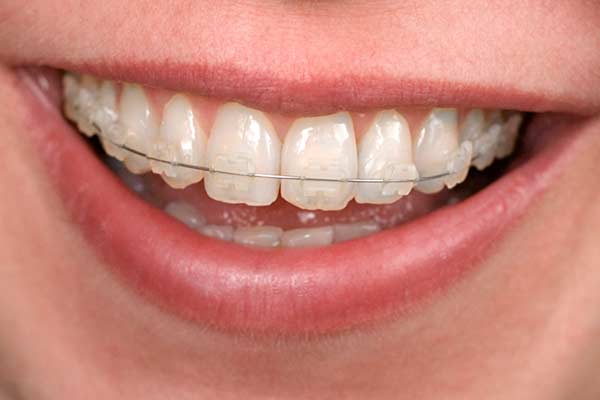Your Overview to Cumming Invisalign: Straightening Teeth with Style and Comfort
Comprehensive Guide to Orthodontics Procedures for Remedying Oral Imbalances
In the world of orthodontics, the journey to achieving a completely aligned smile entails a myriad of treatments tailored to remedy oral imbalances. From standard dental braces to undetectable aligners and even surgical choices, the field of orthodontics supplies an array of services to attend to differing degrees of dental irregularities. Comprehending the details of each procedure, including their devices, benefits, and potential drawbacks, is vital in making educated choices regarding one's orthodontic therapy. As we browse via the comprehensive guide to orthodontic procedures for correcting oral misalignments, the elaborate details of each method will certainly unravel, losing light on the path toward a harmonious and functional oral alignment.
Orthodontic Procedures Summary

Along with clear aligners and standard braces, orthodontists may additionally recommend various other interventions like headwear, palatal expanders, or retainers to address certain placement issues (aligners). These treatments are tailored to each individual's unique requirements and might involve a mix of therapies to achieve the desired results. Normal modifications and tracking are crucial parts of orthodontic therapy to make sure progression gets on track and to make any needed modifications along the road. By going through orthodontic treatments, people can not just achieve a straighter smile but additionally improve their overall oral health and wellness and feature.
Standard Braces: Just How They Work
When taking into consideration orthodontic treatments for oral misalignments, conventional dental braces attract attention as a reliable approach for fixing teeth placing. Conventional dental braces include braces, cables, and bands that function with each other to apply continual pressure on the teeth, gradually relocating them into the desired placement. The braces are affixed to the teeth utilizing an unique adhesive, and the cables are threaded via the brackets. By adjusting the stress of the wires, orthodontists can regulate the direction and force related to each tooth, directing them into correct positioning with time.
As stress is applied to the teeth through the dental braces, the bone surrounding the teeth is reshaped to sustain the brand-new tooth placements. Individuals will certainly need regular adjustments at the orthodontist's office to ensure the braces continue to apply the correct stress for reliable teeth activity.
Invisible Aligners: Benefits And Drawbacks
These clear, customized trays are virtually invisible when used, making them an appealing alternative for individuals looking for a more aesthetically pleasing orthodontic therapy. Individuals can eliminate the aligners prior to eating or cleaning their teeth, reducing the danger of food getting stuck in the appliance and streamlining the cleaning process.

Surgical Orthodontic Options
Surgical treatments in orthodontics existing sensible options for dealing with complicated dental misalignments that may not be effectively dealt with through conventional orthodontic treatments. While conventional braces and invisible aligners can remedy lots of orthodontic problems, particular situations need surgical treatment to attain ideal results. Surgical orthodontic alternatives are usually suggested for severe malocclusions, substantial jaw inconsistencies, and cases where the underlying bone framework requires adjustment to achieve proper placement.
One usual surgical orthodontic treatment is orthognathic surgery, which includes rearranging the jaws to deal with useful problems such as difficulty eating or speaking. This surgical procedure is commonly done in collaboration with an orthodontist that helps straighten the teeth before and after the treatment. Surgical orthodontics may also entail procedures to reveal affected teeth, get rid of excess gum cells, or reshape the jawbone to develop a more unified facial account.
Before considering surgical orthodontic alternatives, clients undergo a comprehensive analysis to identify the need and prospective advantages of such interventions. orthodontist. While surgical procedure may seem overwhelming, it can dramatically enhance both the feature and aesthetic appeals of the smile in instances where conventional orthodontic treatments drop short
Retainers and Post-Treatment Treatment

Post-treatment treatment includes complying with the orthodontist's guidelines diligently. This may include appropriate oral hygiene methods, going to follow-up consultations, and putting on the retainers as recommended. Failure to conform with post-treatment treatment guidelines can cause regression, where the teeth gradually move back towards their original settings. Constant retainer wear, great oral hygiene, and regular dental examinations are important for maintaining the results achieved via orthodontic surgical procedure and ensuring the long-term security of the dealt with oral placement.
Conclusion
In conclusion, orthodontic treatments offer numerous options for dealing with dental imbalances. Surgical orthodontic options are offered for more serious imbalances. Overall, orthodontic treatments can efficiently boost dental health and wellness and visual appearance.
As we navigate via the comprehensive overview to orthodontic treatments for dealing with dental imbalances, the elaborate information of each approach will unfold, dropping light on the course towards a useful and unified dental positioning. - aligners
One of the most typical orthodontic therapies is the usage of braces, which consist anonymous of metal brackets and cables that use mild stress to progressively shift teeth into the wanted position.When considering orthodontic therapies for oral imbalances, traditional braces stand out as a time-tested technique for remedying teeth placing. Furthermore, invisible aligners might not be suitable for discover here complex orthodontic issues that require more significant teeth movement, as they are typically recommended for mild to moderate cases. Retainers are customized orthodontic gadgets developed to hold teeth in their remedied positions after the completion of orthodontic treatment.